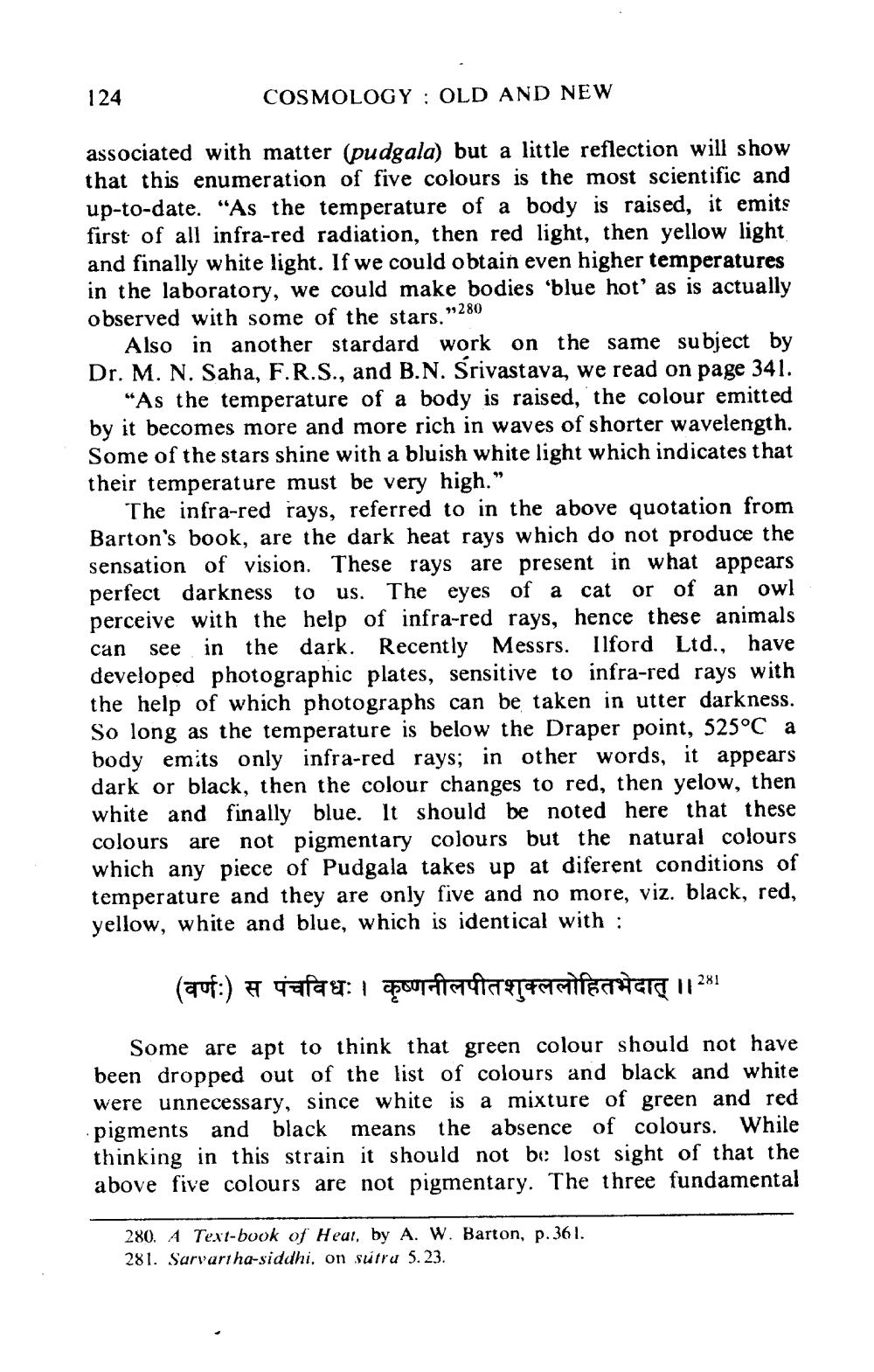________________
124
COSMOLOGY OLD AND NEW
associated with matter (pudgala) but a little reflection will show that this enumeration of five colours is the most scientific and up-to-date. "As the temperature of a body is raised, it emits first of all infra-red radiation, then red light, then yellow light and finally white light. If we could obtain even higher temperatures in the laboratory, we could make bodies 'blue hot' as is actually observed with some of the stars."
"280
Also in another stardard work on the same subject by Dr. M. N. Saha, F.R.S., and B.N. Srivastava, we read on page 341.
"As the temperature of a body is raised, the colour emitted by it becomes more and more rich in waves of shorter wavelength. Some of the stars shine with a bluish white light which indicates that their temperature must be very high."
The infra-red rays, referred to in the above quotation from Barton's book, are the dark heat rays which do not produce the sensation of vision. These rays are present in what appears perfect darkness to us. The eyes of a cat or of an owl perceive with the help of infra-red rays, hence these animals can see in the dark. Recently Messrs. Ilford Ltd., have developed photographic plates, sensitive to infra-red rays with the help of which photographs can be taken in utter darkness. So long as the temperature is below the Draper point, 525°C a body emits only infra-red rays; in other words, it appears dark or black, then the colour changes to red, then yelow, then white and finally blue. It should be noted here that these colours are not pigmentary colours but the natural colours which any piece of Pudgala takes up at diferent conditions of temperature and they are only five and no more, viz. black, red, yellow, white and blue, which is identical with:
(वर्णः ) स पंचविधः । कृष्णनीलपीत शुक्ललोहितभेदात् ।। 281
Some are apt to think that green colour should not have been dropped out of the list of colours and black and white were unnecessary, since white is a mixture of green and red pigments and black means the absence of colours. While thinking in this strain it should not be lost sight of that the above five colours are not pigmentary. The three fundamental
280. A Text-book of Heat, by A. W. Barton, p. 361. 281. Sarvartha-siddhi, on sutra 5.23.




